
MIPS CPUS
"Microprocessor without Interlocked
Pipeline Stages"
MIPS Computer Systems is founded, and begins developing
its RISC architecture 1984
Silicon Graphics announces it is acquiring MIPS Computer Systems March
1992
Over the past 20 years, the MIPS® architecture has
continually evolved, but the standard definition of the architecture
has remained simple, streamlined and highly scalable. The initial processors
we developed based on the architecture excelled in a wide range of high-performance
applications, from supercomputers to embedded controllers, beginning
with the 8 MHz, 32-bit R2000 processor, based on the MIPS I™ architecture.
Subsequent processors included the R3000®, the 64-bit R4000™,
and the R5000®, R10000® and R12000®, many of which were
developed while MIPS Technologies was part of Silicon Graphics, Inc.
(SGI).
Feature Table of Past MIPS CPUs
| Feature |
R2000 |
R3000 |
R4000 |
R4200 |
R4300 |
R4400 |
R4600 |
R5000 |
R5200 |
R6000 |
R8000 |
R10000 |
R12000 |
| Introduction |
1985 |
1988 |
1992 |
1993 |
1995 |
1993 |
1994 |
1996 |
199? |
1990 |
1994 |
1995 |
1998 |
| MIPS |
I |
I |
III |
III |
III |
III |
II |
IV |
IV |
II |
IV |
IV |
IV |
| Transistors |
0.11 |
0.11 |
3.7 |
2.3 |
4.6 |
2.3 |
1.9 |
3.7 |
|
|
3.5 |
6.8 |
7.15 |
| Technology |
2u |
1.2u |
.35u |
.6u |
.35u |
.35u |
.35u |
.32u |
|
|
.5u |
..35 |
.25u |
| Register Size |
32 |
32 |
64 |
64 |
64 |
64 |
64 |
64 |
64 |
32 |
64 |
64 |
64 |
| FPU |
2010 |
3010 |
Y |
Y |
Y |
Y |
Y |
Y |
Y |
Y |
Y |
Y |
Y |
| L1 Cache |
128k** |
64k |
16k |
16k+8K |
16k |
32k |
32k |
64k |
64k |
** |
32k |
64k |
64k |
| L2 Cache |
0k |
1M* |
1M* |
128k-4M* |
128k-4M* |
128k-4M* |
128k-4M* |
512K-2M* |
1M |
NA |
|
|
|
| Die size |
80 |
40 |
84 |
90 |
90 |
100 |
70 |
84 |
|
|
289 |
350 |
229 |
| Speeds |
12-33 |
20-40 |
50-250 |
40, 80 |
95,100 |
50-250 |
100-150 |
150-266 |
250, 300 |
60-66 |
75-250 |
180-360 |
270-400 |
| |
|
|
|
|
|
|
|
|
|
|
|
|
|
| |
|
|
|
|
|
|
|
|
|
|
|
|
|
| |
|
|
|
|
|
|
|
|
|
|
|
|
|
| |
|
|
|
|
|
|
|
|
|
|
|
|
|
| |
|
|
|
|
|
|
|
|
|
|
|
|
|
NOTES:
*Off Chip L2
**Off Chip L1
All values in this table are given by relelease or 'common specs. since
the MIPS is a liscensed design, the parameters such as die size, technology,
and speed will very greatly with the different manufactures and the
different time they were made. many of these cores have been used in
embedded apps with different voltages as well. The graph should however,
give you a general idea of the differences inherent in each class of
the R-Series.
R2000
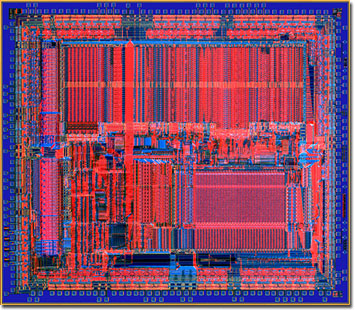 |
The first commercial MIPS CPU model, the R2000,
was announced in 1985 as a 32-bit implementation. It was used in
the DECstation 2100 and DECstation 3100 as well as several others. |
Back to top
R3000
The R3000 was used in high-end UNIX computers by Siemens and DEC
and in the Silicon Graphics SGI Personal IRIS 4D/20 graphic workstations.
On these machines 3D sequences for movies like The Abyss, Jurrasic
Park or Terminator 2 were rendered. The R3000 was the first really
successful MIPS CPU with over 1 million units produced. The R3000
core was also used in the Sony PSX.
The R3010 is the FPU for the R3000. |
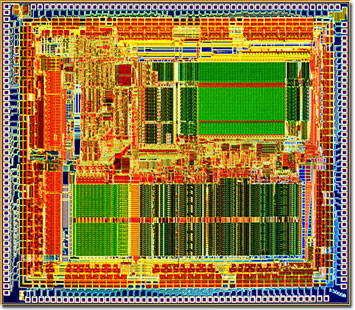 |
Pictures: |
NEC
D30311R-40 VR3010 FPU |
Back to top
R4000
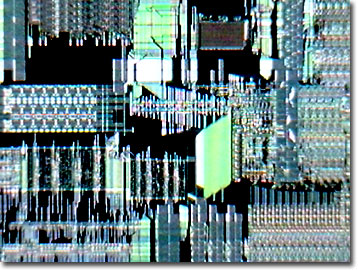 |
As all R4x00 series processors the R4000 is
a 64bit processor and implements the MIPS III instruction set
thus making the processor compatible to its predecessors. They
contain 32 64bit integer registers and 32 64bit floating point
registers, are superpiplined (8 stages) and approach an execution
rate of one instruction per cycle. contains an onboard MMU with
a TLB (to provide rapid virtual to physical address translation)
and an on-chip R4010 floating point unit. The R4000 contains an
8KB instruction and 8KB data cache for a total of 16KB of on-chip
1st level cache.
The R4x00 processors have been available and used
in different versions. PC (as in "R4000PC") denotes
primary cache only and SC denotes secondary cache. The MC versions
contain special support for cache architectures in multiprocessor
systems. The variants used in SGI systems include SC and PC versions
of the CPU only.
Similar to Sun Microsystems, MIPS designs chips,
but does not manufacture them. Instead, MIPS licensed or sub-contracted
their R4000 line of wafers to custom semiconductor manufacturers
including NEC, Toshiba, LSI Logic, and Integrated Device Technologies
(IDT). Although not apparent from the numerical identification,
the R4000 was preceded by the R6000 processor, which was released
in 1991.
The printed clock speed on early R4000 and R4400
processors is not the cpu clock speed, but the external clock
speed, the internal speed is twice that value. Almost every website
displays the wrong value for clock speed. So the NEC D30401RJ-50
VR4000SC-50 is actually a 100MHz chip. This was changed with the
higher multiplier versions of the R4x00 (50MHz ext. / 200MHz int.
/ multiplier 4.0), this chips are marked with their internal clock
speed.
|
Back to top
R4200
MIPS Technologies announces the R4200 processor. It is designed
to run Windows NT at twice the speed of an Intel 486 processor
Promising "Pentium performance in a notebook," Mips Technologies
announced the first power-saving chip in its R4000
microprocessor family, an important step toward moving RISC chips
from workstations to mainstream PCs. The R4200 was intended primarily
for laptops that can run Windows NT. MIPS said the R4200 could be
powered down and reactivated so quickly that a system could force
the chip into power-down mode between keystrokes when you're typing.
. |
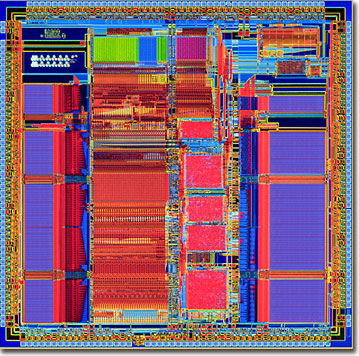 |
Back to top
The R4300, introduced in 1995 by NEC, is a low-cost
but very powerful processor with its external bus reduced to 32 bits.
It was used in the Nintendo64 game console, the NeoGeo Hyper 64 arcade
machine system and many other devices like set-top boxes, video entertainment
systems, arcade games, x-terminals, network hardware and laser printers.
Back to top
R4400
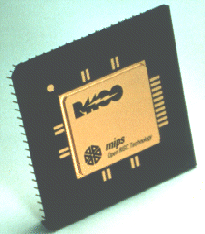 |
As all R4x00 series processors the R4400 is a
64bit processor and implements the MIPS III instruction set thus
making the processor compatible to its predecessors. They contain
32 64bit integer registers and 32 64bit floating point registers,
are superpiplined (8 stages) and approach an execution rate of
one instruction per cycle. It also contains an onbaord MMU with
a TLB (to provide rapid virtual to physical address translation)
and contains an on-chip floating point unit. The R4400 processors
contain 16KB of instruction cache and 16KB of data cache for a
total of 32KB of on-chip 1st level cache. The R4400 processor
can support up to 4MB of off-chip secondary level 2 cache and
all of the 1st level and 2nd level cache control logic resides
on-chip.
Like the R4000 the R4400 CPU is also available with
and without second level cache which is again denoted by the "SC"
and "PC" suffixes. |
Pictures: |
Toshiba
TC86R4400MC-75 |
Back to top
R4600
As all R4x00 series processors the R4600 is a
64bit processor and implements the MIPS III instruction set. The
R4600s are compatible with the R2000, R3000, and R6000 processors.
They contain 32 64bit integer registers and 32 64bit floating
point registers, are superpiplined and approach an execution rate
of one instruction per cycle. It also contains an onbaord MMU
with a TLB (to provide rapid virtual to physical address translation),
and contain an on-chip floating point unit.
Again the PC suffix denotes primary cache only while
the SC suffix denotes that the processor also supports secondary
cache. Both versions were used in SGI workstations - the PC variant
for cheaper entry level systems.
This was designed by QD and is also used in set-top
boxes such as the WebTV |
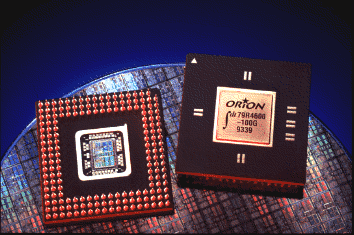 |
Pictures: |
IDT
79R4600-100
IDT
79R4600-100 - Orion
|
Back to top
R5000
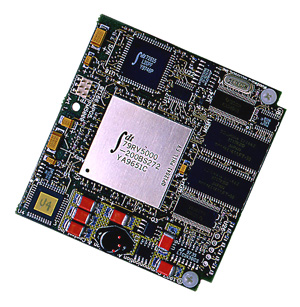 |
As a lot of R4x00 processors the R5000 has been
available and used in two different versions. The PC version contains
only primary cache and no level 2 cache, while the SC versions
are used with 512 KB secondary cache. The implemented instruction
set is MIPS IV providing also compatibility to the previous instruction
sets. All R5000 processors contain 32 64bit integer registers
and 32 64bit floating point registers. It has a 32KB instruction
cache and a 32KB data cache for a total of 64KB on-chip 1st level
cache.
The R5000 is a 2-issue superscalar microprocessor
which has two execution units that can operate simultaneously,
one for integer operations and one for floating point operations.
Even though the R5000 has two execution units, it cannot always
retire two instructions per cycle. The R5000's execution units
are optimized for single-precision multiply-add operations (common
in 3D geometry calculations). Once the five stage pipeline is
primed, the R5000 can issue a single-precision multiply-add every
cycle. The R5000 can also process an integer or load/store instruction
at the same time as a single-precision multiply-add.
the R5000® processor, developed by QED for NEC
and IDT, with funding by SGI. The R5000 processor added workstation
class floating-point to the R4600 and doubled the cache size yet
again. This processor was the basis for a second generation of
designs in both the networking and printing markets. |
Pictures: |
IDT
79RV5000-150 |
Back to top
R5200
| The 64bit R5200 was used in the SGI O2 workstation. The RM5200A
devices extend the Superscalar architecture of the RM5200 family,
enabling the simultaneous execution of one integer and one floating-point
instruction in a single microprocessor clock cycle. Like their predecessors,
the devices are true 64-bit microprocessors with 64-bit data paths,
64-bit ALUs, 32-bit external access on the RM5231A and 64-bit external
access on the RM5261A. The chips include independent 32KB instruction
and 32KB data caches and provide external peripheral and memory
access at bus speeds exceeding 100MHz. Most notably, these capabilities
and features have been maintained while the microprocessor clock
speed has been increased from 250MHz to 400MHz and the power consumption
has been reduced by 70 percent. PMC-Sierra, Inc. is the first MIPS
licensee to fabricate its microprocessor, in mass production, using
Taiwan Semiconductor Manufacturing Company's (TSMC) advanced 0.18m
"LV" process, a process purposefully developed to optimize
and extend the extremes of both performance and power. |
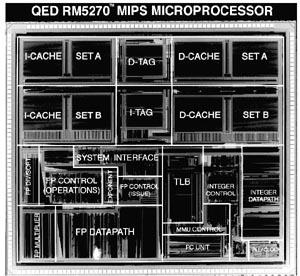 |
Back to top
R6000
Introduced in 1991
The R6000, an ECL implementation of the MIPS architecture which was
produced by Bipolar Integrated Technology. The R6000 microprocessor
introduced the MIPS II instruction set. Its TLB and cache architecture
are different from all other members of the MIPS family. The R6000 did
not deliver the promised performance benefits, and although it saw some
use in Control Data machines, it quickly disappeared from the mainstream
market.
Physically indexed, virtually tagged
This cache policy is implemented by the R6000. It's believed to be the
only processor which ever implemented it. Some literature calls this
policy outright useless but nevertheless something must have appealed
the R6000 designers enough to go for it. Just to makes things even a
little more interesting the R6000 cache and TLB implementations are
closely related again in a unique way.
Back to top
R8000
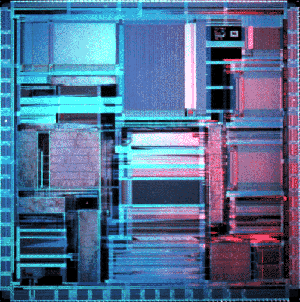 |
The first superscalar implementation of the MIPS architecture
is the R8000 (code name "TFP") that has been introduced
in July 1994. The R8000 is a 64bit RISC microprocessor with strong
emphasis on floating point performance, that is spcifically designed
for supercomputing applications. It implements the MIPS IV instruction
set architecture (ISA). One of the remarkable aspects of this processor
is that it is implemented using multiple chips. It's architecture
makes it a processor that is difficult to develop for, so it was
used only for a short period of time and in a limited range of systems.
|
Back to top
RM7000
PMC-Sierra purchased QED and now makes the RM7000. The the RM7000
(and later products) emphasize on board L2 cache which is very
beneficial to embedded systems.
The newly expanded RM7000 family features the industry leading
RM7000A, RM7000B and RM7065A MIPS CPUs. PMC-Sierra is the only
remaining MIPS RISC vendor to manufacture L2 cache enabled microprocessors
for LAN and WAN internetworking applications. All RM7000 family
CPUs implement true superscalar 64-bit architectures and enable
the simultaneous execution of two integer instructions or one
integer with one floating-point instruction. The processors are
equipped with 64-bit data paths, dual 64-bit ALUs, 64-bit FPUs
and 64-bit system interfaces via the multiplexed address and data
system bus (SysAD). CPU performance ranges from 250 MHz to 500
MHz, with SysAD capability up to 125 MHz. Power dissipation for
this caliber of processor remains an industry benchmark, typically
less than 3.5 W at 400 MHz. All processors are equipped with 256
KB of integrated L2 cache, as well as 16 KB each for independent
L1 instruction and data caches. The RM7000A and RM7000B additionally
contain an L3 cache controller for access of up to 8 MB of external
cache. |
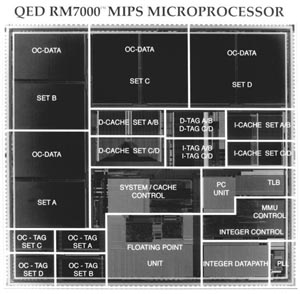 |
Pictures: |
QED
RM7000-250S
QED
RM7000-266T |
Back to top
R10000
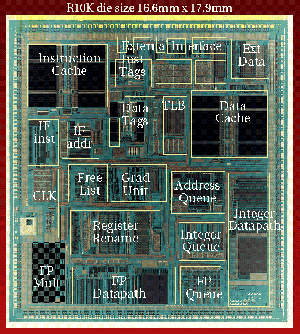 |
The R10000 'T5' is the first single-chip 4-issue superscalar processor
by MIPS, introduced in 1995. It gave a 70 to 100% performance increase
over the R4400 at 250 MHz, previously the most powerful MIPS processor.
The R10000 CPU was used in NEC supercomputers and various SGI machines
like the Indigo2, O2, Octane, Octane 2, Onyx, Onyx 2, Origin and
Challenge |
Pictures: |
NEC
D30700LRS-225 VR10000
Toshiba
TC86R10000-195 |
Back to top
R12000
NEC Corporation (NEC) announced the VR12000-300
microprocessor (part number PD30710RS-300), with performance that
placed it in the highest class of microprocessors in the world.
The VR12000-300 was intended for use by major equipment manufacturers
such as Silicon Graphics, Siemens Nixdorf, and Tandem Computers
as well as by NEC itself. The VR12000-300 microprocessor operates
at 300MHz using a 64-bit RISC design, which simplifies its instruction
sets to accelerate performance. Developed jointly with Silicon
Graphics, Inc., the new microprocessor is compatible with the
MIPS IV instruction set architecture. T
It was used in NEC supercomputers and several SGI
machines like the O2, Octane 2, Onyx 2 and later Origin. |
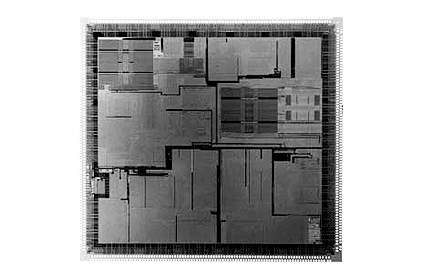 |
Pictures: |
NEC
D30710RS-275 VR12000 |
Back to top
If you have any more info on R-series MIPS CPUs please
let me know
|





